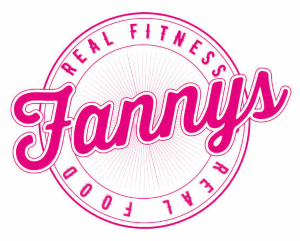Happy New Year!!! I hope you’ve all enjoyed a happy and peaceful holiday and perhaps a little bit of indulgence, but now January has come around it’s that time of year when many of us are embarking on losing the excess holiday pounds. There are many extreme, radical diets out there, but in actual fact, one of the main reasons (along with a change in the type of foods) that people’s waistbands are increasing around the developed world is largely due to an increase in portion size. Therefore, a reduction in your portion size is one way that you can easily get your weight and health back in check. So how can you tell if you are eating the right amount for you?
It’s certainly not just a case of eating as little as you can get away with whilst still being able to function – it’s a careful balance between getting enough and not too much. Now, it’s important to note that there will obviously be, sometimes huge, variations in this method (if you consider a younger, more active person who works out regularly and has an active daily lifestyle versus someone older, who perhaps has a desk job, doesn’t exercise and leads a very sedentary lifestyle).
However, one somewhat simplistic and crude, but also a very useful method is the hand size method. That is to say, as a general rule of thumb women should be eating roughly 1 palm sized portion of protein, 1 fist sized portion of vegetables, 1 thumb sized portion of healthy fats and (when required) 1 cupped handful of carbohydrates with every meal (double these amounts for men).
You may notice from this that it’s not just about how many calories you consume, but about where those calories come from. If you want a body that it going to perform all of it’s functions effectively and hold just the right amount of body fat and muscle tone, then equally as important is where the calories are coming from. Your protein should be good quality and lean, such as organic chicken, fish and lean cuts of red meat. You should aim to get a healthy balance of 1/3 each of monounsaturated, polyunsaturated and saturated fats from things such as avocados, olive oils, nuts, seeds, fish, coconut oil and some meat. Ensure you get a nice big portion of fibrous vegetables with every meal (yes that includes breakfast!). This could be vegetables such as broccoli, kale, spinach, carrots, tomatoes, peas and so on. Finally, add in a small portion of whole food starchy carbohydrates such as quinoa, amaranth, oats, whole grain rice and breads ONLY if you have ‘earned’ them. By this I mean if you have performed some exercise, because most adults who don’t exercise can obtain enough carbohydrates necessary for health and fitness from the vegetables they eat. The rest – the desserts, cakes, biscuits, crisps, fruit juices, alcoholic drinks, pastries and packaged foods are unfortunately completely unnecessary to human survival and highly detrimental to waistbands and health, so consume rarely if ever and with caution!!!
How does this compare to your plate size? Are you eating the right amount AND the right types of food? If not then why not see if you can make the adjustments. Getting fit, losing and maintaining a healthy weight doesn’t have to be complicated – it’s all about moderation and consistency.
If you would like help getting your eating on track then get in touch for a detailed and personalised nutrition plan and meal planner (currently 30% off throughout January 2018).





